Sir Francis Drake was born on a farm just a few miles from Buckland Abbey in Devon, which is now run by the National Trust. From modest beginnings, ‘El Draco’ had grown up to become a buccaneer (that’s a polite word for pirate!), a great Elizabethan naval commander and scourge of the Spanish Empire in Central America where he attacked their ships and stole their gold at every opportunity.
This article may contain affiliate links that provide commission on purchases you make at no extra cost to you. As an Amazon Associate I earn from qualifying purchases.
Sir Francis Drake and Buckland Abbey
Since Queen Elizabeth I was one of his backers, she was thrilled when Drake returned to England in 1580 with his ship, the Golden Hind, laden with Spanish treasure, of which she would take the lion’s share. Drake was knighted as a reward and bought Buckland Abbey with just a small part of his bounty, adopting as his motto ‘Sic Parvis Magna’ – from small beginnings come great things.
The Rembrandt self portrait
Buckland Abbey’s more recent claim to fame is the Rembrandt self-portrait which came to the property in 2010 as a legacy. Until recently the painting was thought to be a portrait of the artist by one of his pupils or a copy of one of his originals. A visit by the Rembrandt expert, Professor Ernst van de Wetering, prompted a reconsideration of the painting and investigations started to see if it could be a genuine self-portrait.
The now confirmed Rembrandt ‘Selfie’ is housed in a ground floor exhibition room at the abbey, with fascinating information about all the detective work that went into establishing that it was the real thing. The portrait has an element of the dressing up box about it, with the artist in a flamboyant cap with ostrich feather, flowing velvet cape and gold chain, using the ‘Tronie’ style of Dutch painting in which people were portrayed as historical or mythological characters.
How do we know the Rembrandt is genuine?
We watched a video explaining the reasons that the portrait was agreed by art experts to be genuine, such as the fact that the signature had been made when the rest of the paint was still wet, rather than added afterwards. It also appears to have been written rather carelessly, with the artist running out of space so that he left off the D in his name, something you might not dare do if you were a forger.
X Rays and infrared photography showed how the shape of the figure was blocked out on the canvas, which was a typical technique Rembrandt used and an analysis of the pigments showed they were consistent for the period.
After painstaking research, analysis and cleaning, the self-portrait was found to be genuine and now takes pride of pace in the centre of the exhibition room, where you can see the back with original labels and markings, as well as the front.
The Cistercians at Buckland Abbey
On arrival at Buckland Abbey we walked down into the Ox Yard, where old farm buildings now house craft workshops and a room where you can see a video about Sir Francis Drake. The shop and restaurant are in what was once the old monastic guest house.
Buckland Abbey was, as the name suggests, originally founded in 1273 as a monastery by Amicia, the Countess of Devon, in memory of her son who had been murdered. She endowed the monastery and large estates in Devon to the Cistercian order who divided their time between spiritual devotions and agricultural labour, especially sheep farming.
The Great Barn at Buckland Abbey
The Great Barn, which sits right beside the main house, was built at this time and is one of the largest of the period with oak roof beams arching 60 feet above you as you enter. It was built to store the farm produce, its sheer size indicating the wealth and productivity of the abbey estates and is often used for workshops and events like carol singing at Christmas.
Since we were there in the late autumn, we found that apples from the estate were being pressed to make cider, the group of volunteers only taking up a small space of the huge barn.
After King Henry VIII’s dissolution of the monasteries in 1539, the abbey buildings and estate were sold to Sir Richard Grenville whose heirs converted the monastic buildings including the church into a private home. Sir Francis Drake moved to Buckland in 1582, the same year he became Mayor of Plymouth aged 39, already famous for his 3 year circumnavigation of the world and his exploits in the New World.
The Treasure Gallery at Buckland Abbey
We enjoyed a look around the various galleries in the house where portraits and objects from the house’s history are on display. Pride of place in the Treasures Gallery on the first floor is taken by Drake’s Drum, which he took on his naval voyages and is said to sound whenever England is in danger. To the side of this main display room was the oak panelled Drake’s Chamber, filled with oak furniture and portraits of the period, just as it might have looked in Drake’s day.
Along the corridor we moved on 200 years as we walked into the Georgian Dining Room, while up the stairs to the top floor was the Long Gallery, dominated by a huge statue of Sir Francis Drake. This long, open space was used in Tudor times for the inhabitants to get some indoor exercise and we found information about life on board the ships that Drake might have sailed and the lives of the Cistercian monks.
Back on the ground floor were the Tudor kitchens, laid out with 18th century cooking utensils and foods as if preparing for the dinner party upstairs. The final part of the tour was through the Great Hall, created in 1576 by Sir Richard Grenville when he converted the monastery into a house. Apparently the nave of the old church where the monks were buried sits under the pink and white tiled floor of the Great Hall.
The Gardens at Buckland Abbey
Our tour finished, we came out of the house and back into the beautiful formal gardens, inspired by Tudor knot hedges filled with roses and a small orchard of apple trees. If we’d had more time, we could also have taken a walk around the Buckland Abbey estate through the great deer park and woodland where wild garlic and bluebells bloom in the spring.
If you are on the western edge of Dartmoor visiting Tavistock or Plymouth, do stop in to Buckland Abbey for a big slice of Devon’s history and to find more about Sir Francis Drake and the Rembrandt selfie.
If you go: Buckland Abbey, Yelverton, Devon, PL20 6EY, Tel: 01822 853607
Closed in January Open daily 11-4 in winter, 10:30-5:30 in spring/summer. (check website for more details) |Thanks to the National Trust who gave Heather and Guy complimentary admission to Buckland Abbey.
This article is originally published at Heatheronhertravels.com


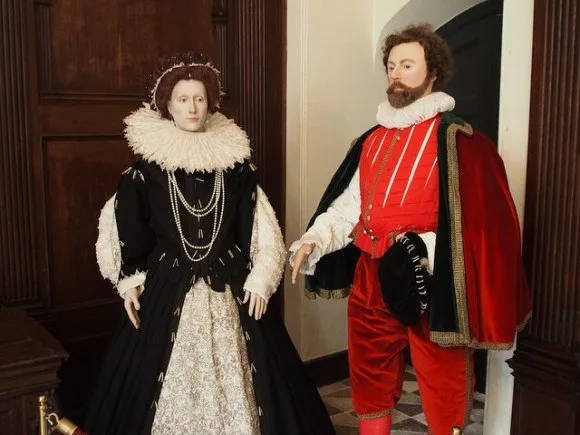
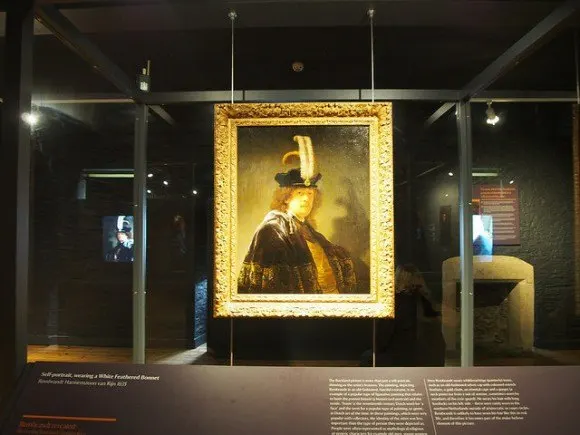
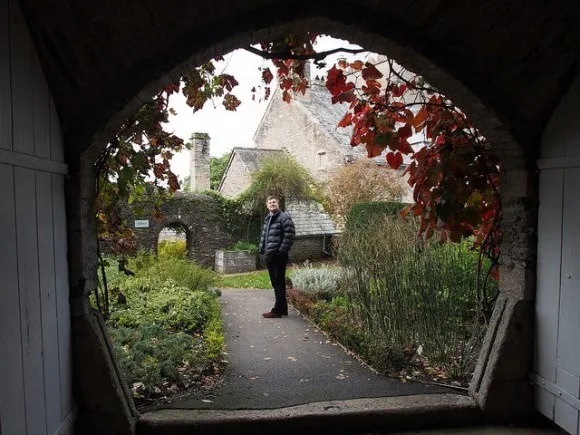
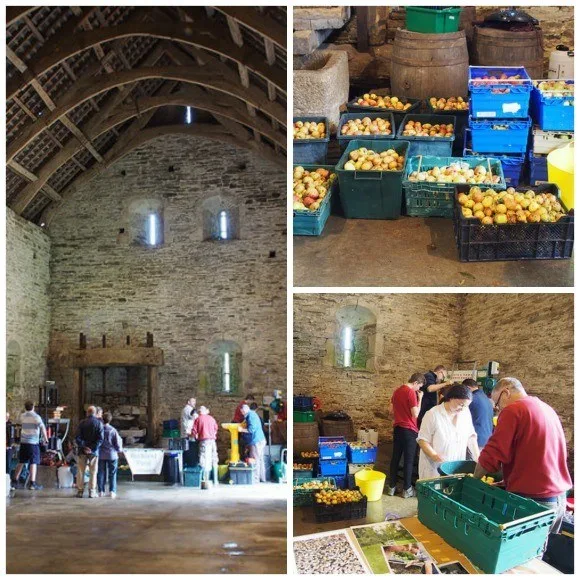
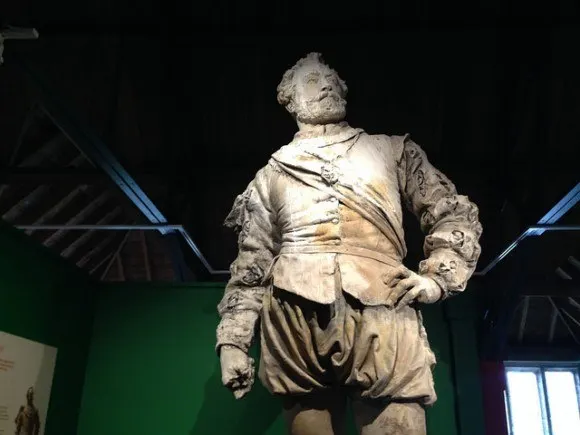
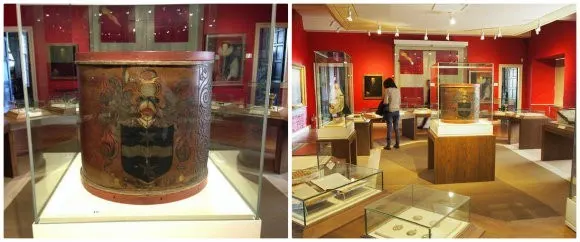
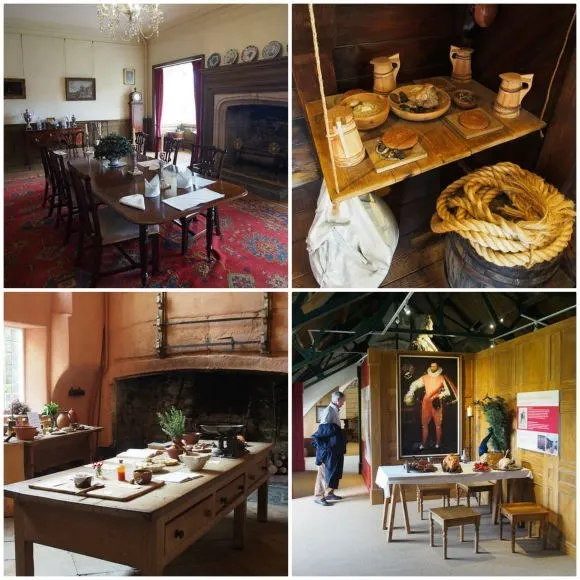
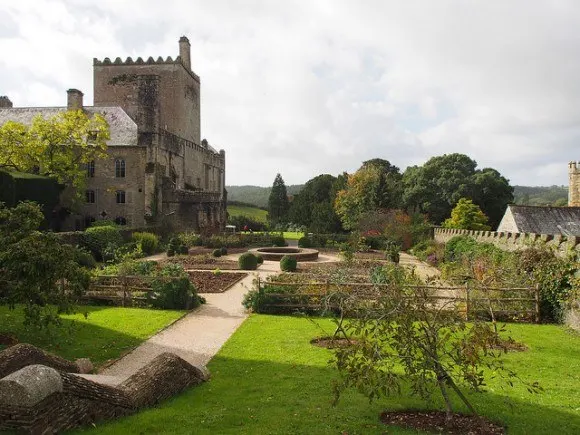

Stacy
Tuesday 10th of February 2015
Lovely place and nice description from you. Thanks for sharing.
Robert
Monday 19th of January 2015
A Rembrandt Selfie, how cool is that. We made it to London on our British Isles cruise last year but didn't make it too the countryside. This would be a good place to include in our next trip.
jaklien
Monday 12th of January 2015
This looks like a good spot for a little staycation.
Heather Cowper
Monday 12th of January 2015
@Jaklien yes, devon is only a couple of hours from me and I'll be heading back there in a couple of weeks.
Uptourist
Monday 12th of January 2015
That place is simply beautiful. The building reminds me so much of royalty that it takes me back in time.
Heather Cowper
Monday 12th of January 2015
@Uptourist you can definitely feel the history of the place.
Barbara Weibel
Sunday 11th of January 2015
I love the idea of this painting being an earlier version of today's selfie!
Heather Cowper
Monday 12th of January 2015
@Barbara yes they have been encouraging visitors to take their own selfies and post them online